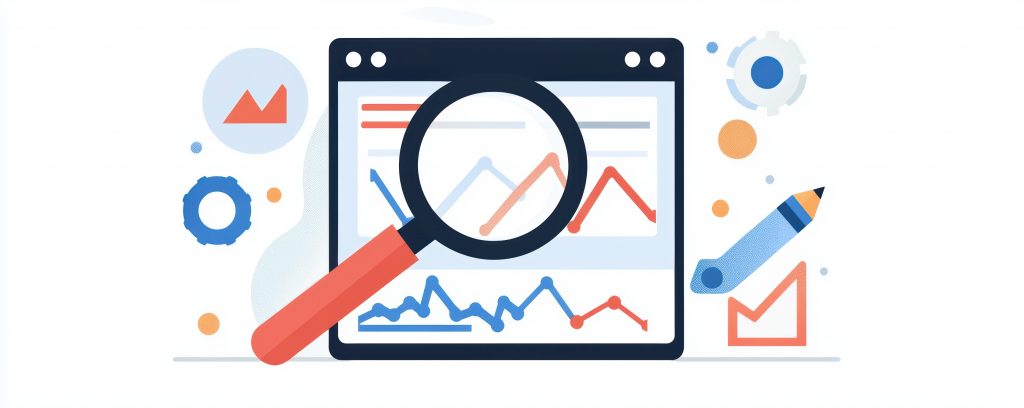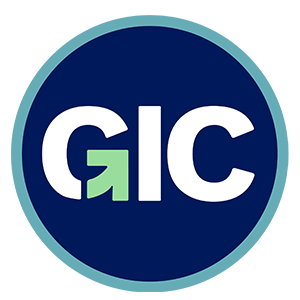Conducting Your Own Competitive Analysis
Last updated on April 15th, 2025

The idea of redesigning an existing website can be daunting. It’s hard to know where to begin. Fortunately, the GIC is here to help Delaware agencies through the process of migrating to the new Lighthouse design system. Lighthouse takes care of a lot of design decisions, because its components have already been built with usability and accessibility in mind.
But there are some decisions that can only come from within the agency itself. An improved version of your website requires some careful thought and the organization of existing content. For some suggestions, take a look at our list of Top Ten Things Agencies Can Do to Prepare for Lighthouse.
Here’s an 11th suggestion, and it can be done at any point during your evaluation process: Conduct your own competitive analysis.
A competitive analysis is part of the redesign process between the GIC and agencies we work with. But agencies that do this research now will expedite that process!
What is a competitive analysis?
State agencies typically provide state-specific services that literally can’t be provided by anyone else. Can anyone other than the Delaware Department of Correction provide information about the state’s incarcerated population? Not without getting that information from the DOC first!

(NOTE: We’re currently working with the Department of Correction on their new Lighthouse website!)
There’s no actual competition for most state agencies. So how would we conduct a competitive analysis? In this case, the concept refers to a comparison to help see if there are aspects of a similar website that might make sense for our agencies as well.
Although there’s no direct competition for the Delaware Department of Correction, there is some version of it in 49 other US states. So that’s where we’ll look. The goal is to see what’s working for websites that are doing what we do. What we might consider to be a sister agency on an everyday basis will be our competition for this exercise.
Why conduct a competitive analysis?
Competitive evaluations are often a good initial research activity for a project. They can inform the design direction for that project and uncover the need for a particular feature. The goals of the competitive evaluation should be clear before any work is started. Ask yourself:
• What design challenges are you trying to solve?
• What features of your competitors seem interesting or appealing?
• What features on your site do you want to compare to others?

How to do it:
Enlist as many people as you can to participate in the steps below, individually. Comparing these notes can lead to healthy discussion about your agency’s messaging.
1. Select 2-4 sites that have goals or missions that are close to the goals of your own site, typically a similar government agency from a different state
2. Do these agencies/organizations represent an apples-to-apples comparison? Take note of the size and scope of your comparison; larger organizations are typically going to have more funding and may have invested in user research for their own site.
3. Determine the focus of your study: Evaluations can be targeted towards content, design, accessibility, or performance, among other options. Your analysis can consider all of these factors.
4. When going through each individual site and the goals in mind, take specific notes and screenshots about:
• What makes this website unique?
• What are this website’s advantages?
• What are this website’s disadvantages?
5. Here are some specific areas to consider comparing. Take notes and screenshots as you go:
• How prominently information about agency mission and services are displayed; Is the point of the website clear?
• Hero or main image; What are they choosing as their website’s top story?
• Top navigation options, titles of navigation menu items; Are there better names for some of your pages?
• Number of steps (clicks) it takes for a user to reach the same destination; Pick a service or form that both your site and your competition’s site contain and see if it’s easier to get there on the other site.
6. Compare your competitors’ decisions and screenshots side by side:
• What are the similarities, to your own site and amongst your competitors?
• Do the differences represent improvements on one side or the other?
• What are some approaches you’ve learned from other sites?
• What opportunities have occurred to you through this exercise?
7. Take note of any questions that have come up about features or information you don’t understand. Consider reaching out directly to your counterpart at the other organization with followup questions about their site and processes.
Considering the Results
Take whatever criteria you set and review your thoughts. Compare them with others who participated in your competitive analysis. Key questions to address include:
• How do competitors organize their content?
• What writing tone and style are they using?
• To which audiences are they speaking?
These comparisons won’t make any decisions for you, and they may or may not seem to provide any clear direction at first.
Sometimes, all the sites you’ve reviewed are doing something new that seems useful and looks good. In that situation you’ve got a pretty clear prompt.
But sometimes, everyone is doing their own thing and there is no clear consensus in the way something is being presented. That’s when to default to the last set of criteria: Does it meet accessibility standards? Do the people on your own team like it? Is there any reason NOT to do it?
And then the very last factor: Your gut. If you reach this point, you will hopefully feel empowered by the research you’ve done and your familiarity with the options. And if you are literally at the flip-a-coin point of indecision, please reach out to us at the GIC and we are happy to help talk through it.
Here’s a great post from the Nielsen Norman Group that expands on most of the concepts we’ve discussed here.
The least quantifiable benefit of conducting a competitive analysis may be the attainment of a greater familiarity with your own website. The more you immerse yourself in the material, the sharper your own understanding of its strengths and challenges will become.
To paraphrase Emerson, let the journey become the destination and you will see progress with every step!
Calling all Feedback Partners!
We’re looking for developers and Delaware agency web staffers who would like to help us improve Lighthouse!
Lighthouse is now fully available to explore, and we invite developers and agency web editors to dig their hands into the sand and begin to envision their own new Lighthouse websites. This effort is about building a community to provide criticism, suggestions, and enthusiasm for this project.

If you’re interested in participating as a feedback partner, please share your thoughts and your contact information.
Participants may be sent feedback surveys or be asked to join user testing sessions!
Read more articles about: Accessibility, CLF, Content Strategy, Data, Design, Lighthouse, User Research.
Subscribe Now:
Follow our blog for the latest GIC updates, accessibility tips, and dev trends affecting Delaware agency websites.
Browse by Topic:
- Accessibility
- Accessibility Newsletter
- Announcement
- CLF
- Content Strategy
- Data
- Design
- Lighthouse
- Livestream Production
- Uncategorized
- User Research
- Video Production
Browse by Date:
- December 2025
- November 2025
- October 2025
- September 2025
- August 2025
- July 2025
- June 2025
- May 2025
- April 2025
- March 2025
- February 2025
- January 2025
- December 2024
- November 2024
- October 2024
- September 2024
- August 2024
- July 2024
- June 2024
Feedback:
Have an idea for a blog post or feedback on an existing post? We would love to hear from you!





